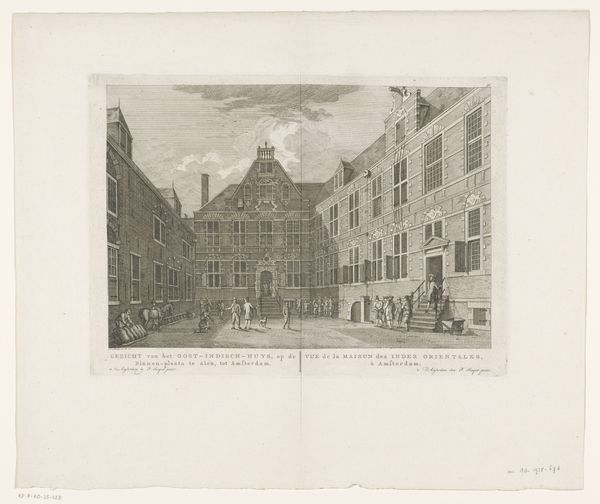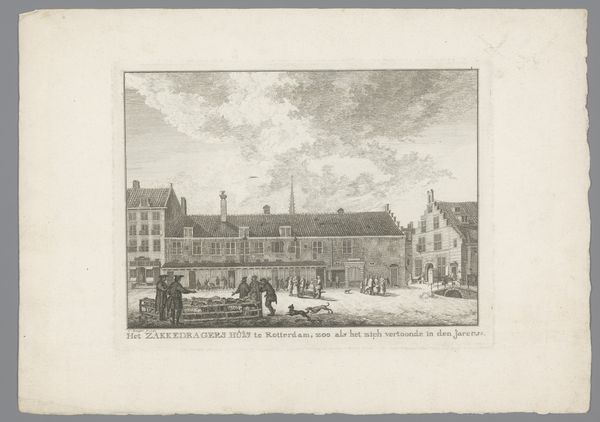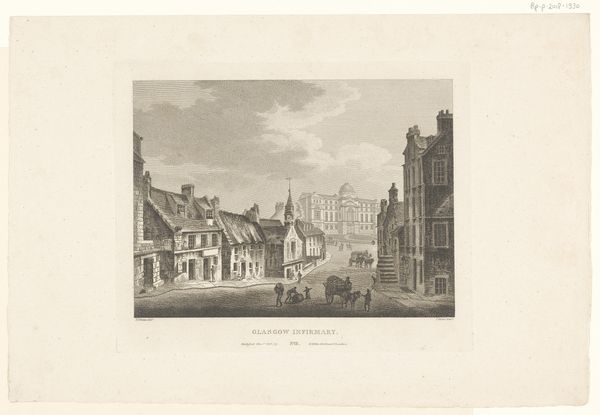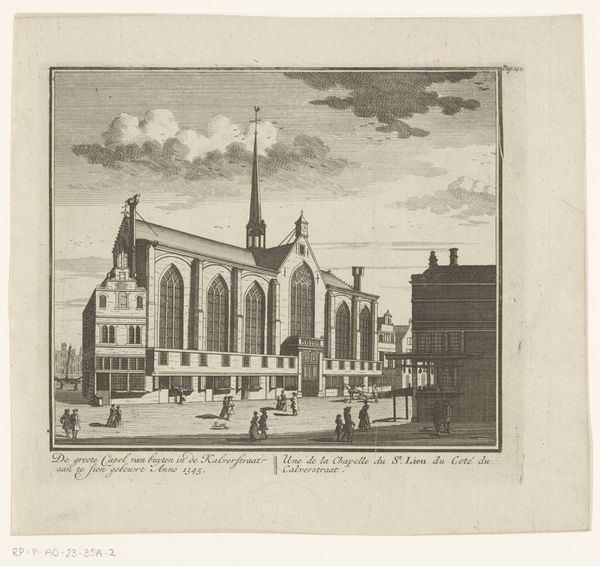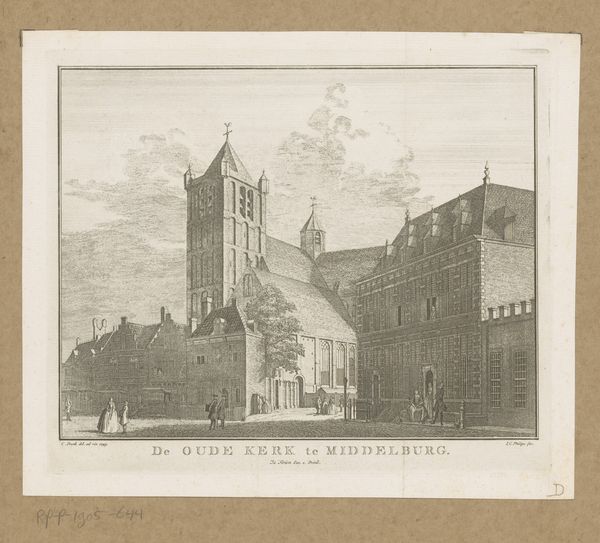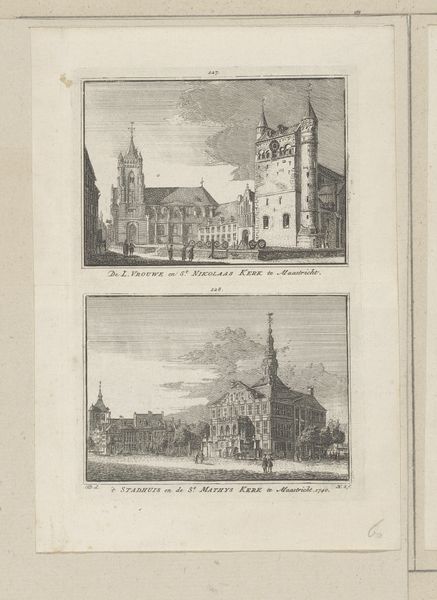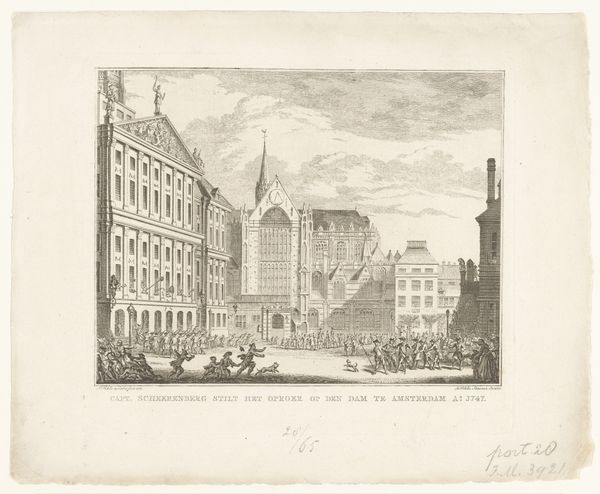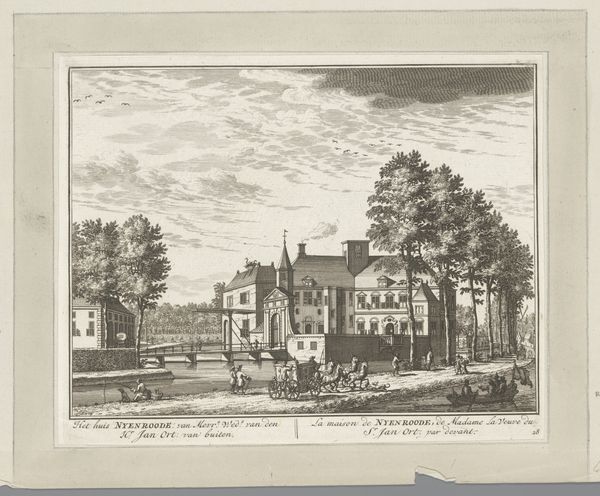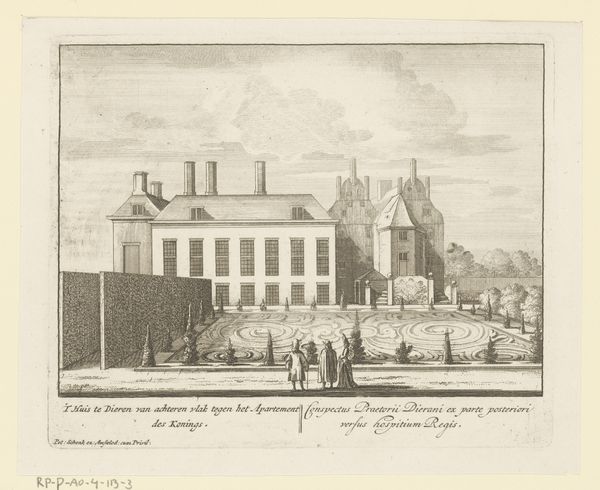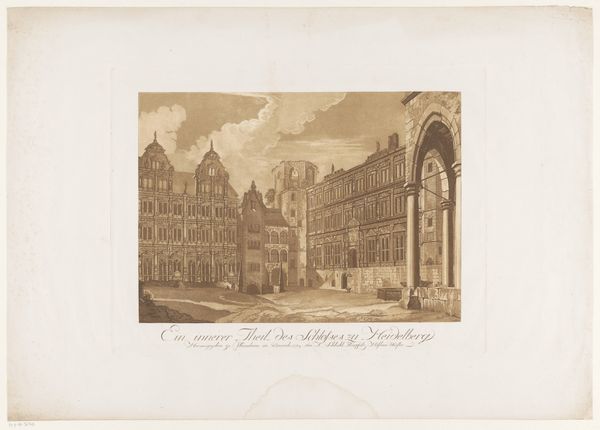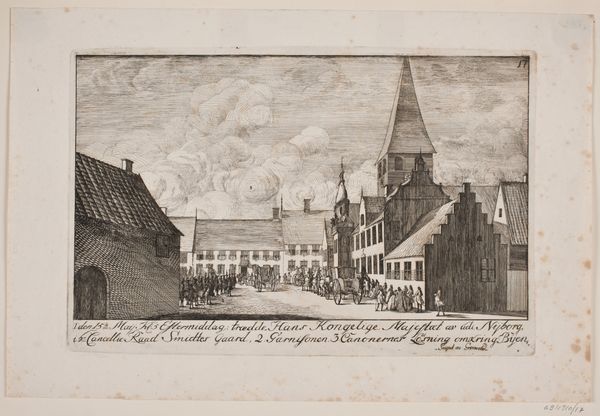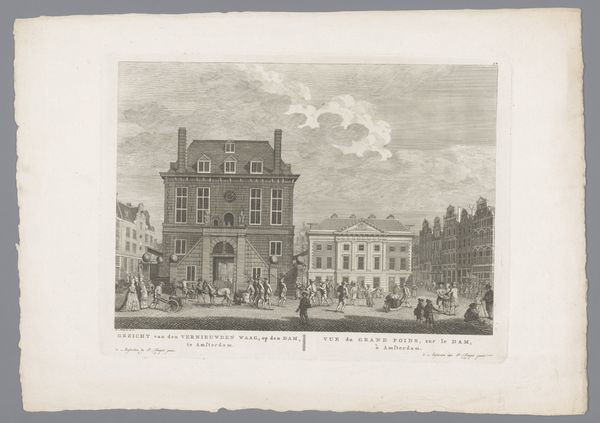
Gezicht van het Oost-Indisch Zeemagazijn op Oostenburg te Amsterdam c. 1770 - 1783
0:00
0:00
hermanuspetrusschouten
Rijksmuseum
Dimensions: height 274 mm, width 350 mm
Copyright: Rijks Museum: Open Domain
Editor: This is “Gezicht van het Oost-Indisch Zeemagazijn op Oostenburg te Amsterdam,” or "View of the East India Naval Warehouse on Oostenburg in Amsterdam", an engraving from around 1770-1783, by Hermanus Petrus Schouten. I find the symmetry of the architecture really striking. What catches your eye when you look at this print? Curator: The East India Naval Warehouse! It immediately evokes a powerful network, doesn’t it? This image is more than just a building; it's a visual symbol of Dutch global trade and the ambitions – the sometimes brutal ambitions – of the Dutch East India Company. The baroque style architecture lends an air of authority, almost imposing. Do you notice the meticulous detail in the engraving? Editor: Absolutely, the precision is incredible. I'm also intrigued by the figures in the foreground. They seem almost incidental, yet they give a sense of scale. Curator: Precisely. Consider these figures not just as staffage, but as key to unlocking the narrative. They animate the scene and represent human participation. The visual language implies power, wealth, and international reach. These buildings, canals, and figures… they are more than what they seem. They contribute to how Amsterdam envisioned and projected itself onto the world. The visual motifs, meticulously rendered, evoke the grand theatre of trade. What do you think of the presence of this symbolism today? Editor: It’s thought-provoking. It makes me consider how images like this have shaped our understanding of that period and how such symbolic visual communication may contribute to an idealized – or perhaps problematic – cultural memory. Curator: Exactly. By decoding the symbolic vocabulary, we reveal layers of historical context. A simple cityscape becomes a visual record of societal aspirations, anxieties, and a whole legacy of symbols we grapple with even now.
Comments
No comments
Be the first to comment and join the conversation on the ultimate creative platform.
